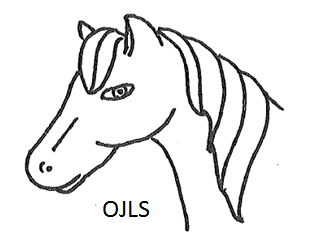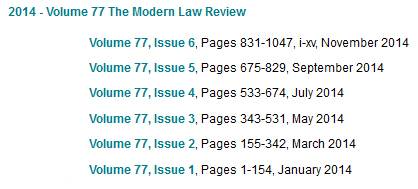So… hello again! Sorry for being away from the blog for a while. To celebrate the end of the first 4 months in my new post, I’d like to record some of my recent thoughts (personal, not those of my employer whether current or former) about open access (OA).
If you’re new to the discussion about OA, you might like to pause to read this summary about open access, including a description of gold and green routes.
Last week, the House of Lords Science and Technology Committee published their report on the implementation of open access. In all the discussion about gold vs green routes to open access, including last year’s Finch Report; it seems to be taken for granted that the current business model for academic publishing will stay the same and it’s just the sources of funding that will change. For example, universities may move funds away from library subscriptions for e-resources and use them instead to fund an author-pays model.
But…
Wouldn’t this be a good moment to step back and see how profoundly the internet has changed the way we do (and could) distribute information in a global scholarly community? And how this fresh look could allow us to build a completely new model for publishing and distributing knowledge?
Almost all the characteristics of the print publishing paradigm are no longer applicable: consider how the overheads, timescales, ease and cost of making copies, distribution logistics – and more – are completely different for PDFs from what they were for print journals.
So why aren’t we challenging the underlying pricing model?
I’ve heard of some libraries spending 80% of their acquisitions budget on e-resources, and only 20% on print materials. The costs to libraries is on an unprecedented scale, especially when you consider that these hefty invoices are annually recurrent, and that under some circumstances, cancelling the subscription can incur cancellation fees (which are also recurrent) and a loss of access to the content previously paid for (unlike print journals, were you could at least hang on to the hard copies).
In my new job, I am seeing this problem from a slightly different angle too. Consider a university which is primarily teaching-focused, but is trying to increase its research profile. This costs money: researchers need funds for attending conferences and other academic events; if they are spending less time teaching in order to carry out their research, then someone else must be employed to ensure that the timetable is covered; and of course, they need access to a greater range of information resources to support their studies.
This isn’t just about budgets and prestige, it’s also about social mobility. Imagine the difference between this scenario, in which many junior lecturers are pursuing their PhDs alongside a full teaching job, with that at other institutions at which there is funding to support PhD/DPhil students to study full-time.
I know that the situation for publishers is sensitive and they are trying to defend their subscription charges, but I don’t think it makes sense to apply a print-world-based pricing model and licence type directly to e-journals in a new format and a different medium.
There is no single agreed protocol for the article publishing process: peer review, impact factor, half-lives of articles (in terms of access stats), and other factors vary between disciplines; and what is true of the life sciences is not necessarily transferable to the humanities.
Furthermore, journal articles (in any format) play a different role in different disciplines: for example, original research articles in peer-reviewed journals are primary sources in the life sciences, but are often secondary sources in the humanities. This means that journal articles occupy a different niche in the research ecology of different disciplines, and may need to be funded or administered differently. The current publishing model and associated norms are based on practise in the sciences.
This could be an excellent opportunity to stand back and consider a new model for making available the products of research, operating a system of peer review, charging (to whom?) a proportionate fee (how much?) for hosting the content, and building in the functionality and possibilities of new information technologies.
How do we begin this conversation?
 Meanwhile, Finnish researchers have launched a boycott against Elsevier: “The group behind Tiedonhinta.fi statement urges researchers to refrain from peer review and editorial duties for journals owned by publishing giant Elsevier. The boycott is launched on a new website nodealnoreview.org. The site welcomes also signatures from international colleagues all around the world, who are worried about cost of and access to research literature in their own countries.”
Meanwhile, Finnish researchers have launched a boycott against Elsevier: “The group behind Tiedonhinta.fi statement urges researchers to refrain from peer review and editorial duties for journals owned by publishing giant Elsevier. The boycott is launched on a new website nodealnoreview.org. The site welcomes also signatures from international colleagues all around the world, who are worried about cost of and access to research literature in their own countries.”







